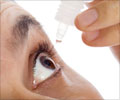- Facts about Dry Eye - National Eye Institute, National Institutes of Health (NIH), USA - (https://nei.nih.gov/health/dryeye/dryeye)
- Dry Eye Syndrome - Medline Plus, U.S. National Library of Medicine - (https://medlineplus.gov/ency/article/000426.htm)
- What is Dry Eye? - American Academy of Ophthalmology - (https://www.aao.org/eye-health/diseases/what-is-dry-eye)
- Dry Eye - American Optometric Association - (https://www.aoa.org/patients-and-public/eye-and-vision-problems/glossary-of-eye-and-vision-conditions/dry-eye)
- Dry Eye Syndrome - Kellogg Eye Center, Michigan Medicine - (https://www.umkelloggeye.org/conditions-treatments/dry-eye-syndrome)
What is Dry Eye Syndrome?
Dry eye syndrome is technically termed as keratoconjunctivitis sicca, which means 'dryness of the cornea and conjunctiva' in Latin. Dry eye syndrome is a chronic progressive condition due to lack of moisture and lubrication, resulting in constant irritation of the surface of the eye. This is often accompanied by inflammation, redness, and scarring of the surface of the eye, causing blurred vision.
Prevalence of Dry Eye Syndrome
Dry eye syndrome is a very common eye disorder and is more prevalent in women than in men. It occurs in 5-34% of people and varies between different populations. In the case of older individuals, approximately 70% are affected.
Composition of Tear
Tear is composed of the following three components:
- Aqueous Component: This consists of water, which is secreted by the lacrimal glands located behind the outer aspect of the upper eyelids. The main function of the aqueous component is to keep the eye surface moist.
- Lipid Component: This is an oily secretion of Meibomian glands in the eyelids. This is composed of fats (lipids) and helps to lubricate the eye surface and prevents the tear film from evaporating too quickly.
- Mucin Component: This has a mucus-like consistency and is secreted by goblet cells in the conjunctiva, the outer membrane which covers the sclera (white of the eyes). This component helps to anchor and spread the tear across the surface of the eye.








